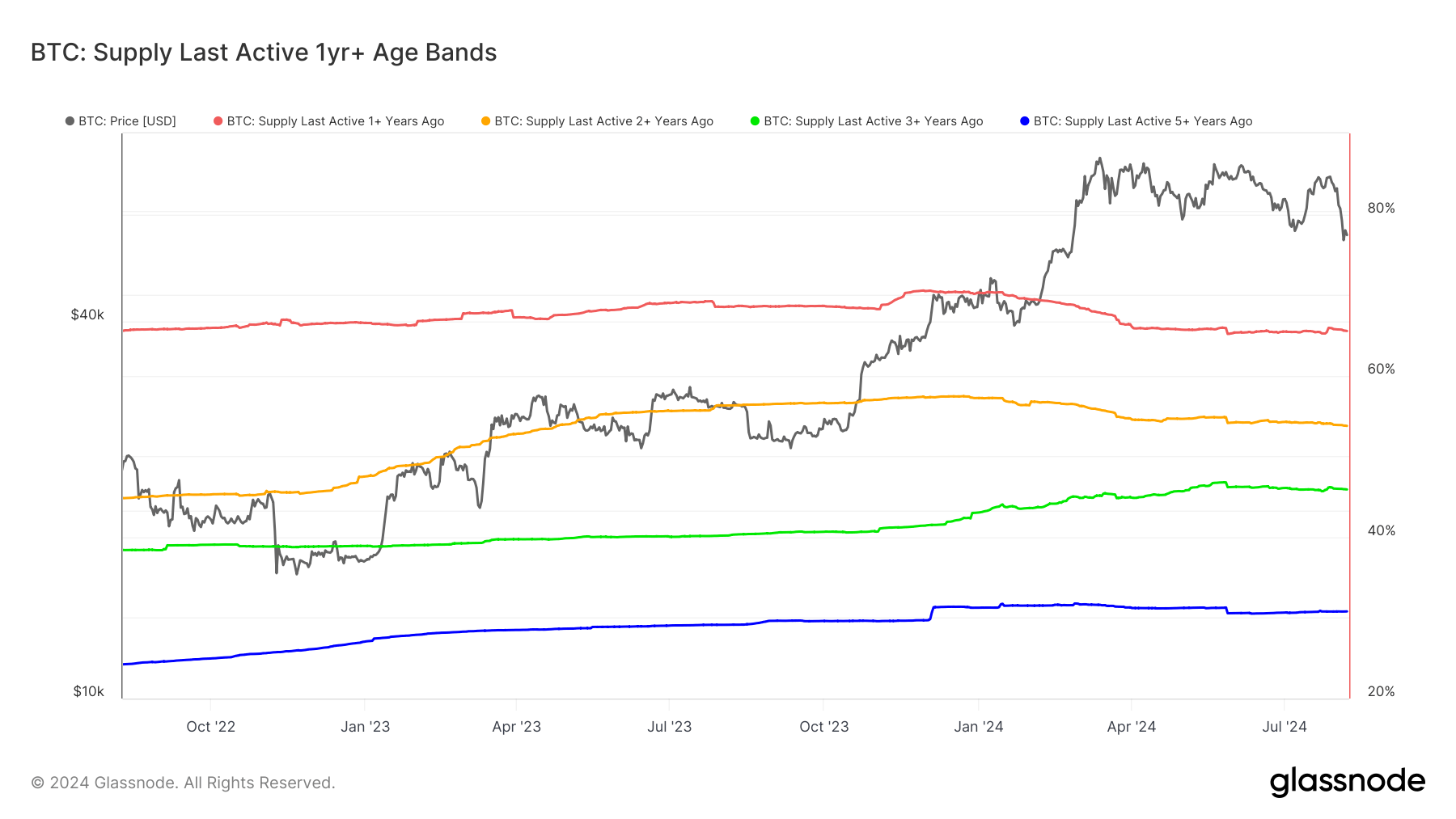India has started using artificial intelligence (AI) to mitigate climate change risks but has a long way to go as economic constraints, bureaucratic hurdles, and socio-political factors decelerate implementation.
“India is not using AI extensively to address climate change risks primarily due to factors such as limited infrastructure, lack of data availability, insufficient skilled workforce in AI and environmental sciences, and the high cost of implementing advanced AI technologies,” Rohan Sharan, founder and chief executive of Timechain Labs, an on-chain application development firm utilizing BSV blockchain technology, told CoinGeek.
“The most critical challenges include inadequate infrastructure, lack of financial resources, poor policy implementation, and limited public awareness,” Sharan added.
India is feeling the ill effects of climate change with rising temperatures and heat waves, erratic monsoons and devastating floods. In 2023, India suffered extreme weather events almost daily during the first nine months of the year, killing 2,923 people and affecting close to 1.84 million hectares of crop area.
Earlier this month, increased heat generation due to climate change led to more thunderstorms and lightning strikes, killing at least 64 people in the northern Indian states of Uttar Pradesh and Bihar. The people killed were either transplanting paddy in fields, grazing cattle, or taking shelter under trees to protect themselves from rain.
“Addressing climate change with AI is a long-term commitment requiring sustained investment and consistent policies, which are not yet on the horizon,” said Raj Kapoor, chairman of Global Alliance for Ethical AI Innovation.
“The inherent biases of AI models training data may often lead to unfair outcomes that disproportionately affect certain communities. In India, these are sensitive issues. Add to that the opacity of AI decision-making processes, lack of transparency, [making] it difficult for stakeholders to trust these systems,” Kapoor added.
Lack of high-quality, comprehensive data is often unavailable or inconsistent, especially in remote areas. AI models also require high accuracy and reliability to predict complex climate systems effectively. Integrating AI with existing climate monitoring systems is a complex process, and scaling these models to handle global data continues to be a major hurdle.
In March, the government approved $1.24 billion for the next five years to boost the country’s AI ecosystem, innovation and entrepreneurship. The initiative is expected to boost the country’s global leadership in AI and ensure ethical and responsible AI deployment.
“The required infrastructure for AI, such as data centres, demands substantial investment and may not be feasible in all regions. India, with its diverse demography, will face these challenges,” Kapoor pointed out. “The global nature of climate change necessitates international coordination, which is challenging due to varying policies and priorities. Allocating adequate funding and ensuring efficient resource allocation are persistent issues. The need for interdisciplinary collaboration across climate science, data science, engineering, and social sciences, are often difficult to coordinate.”
Moreover, the production and disposal of AI hardware contribute to e-waste and resource depletion, and India is yet to find an optimal resolution to address this.
“India’s policy framework for climate adaptation, while comprehensive, often suffers from inadequate implementation at the local level due to fragmented governance, lack of coordination among agencies, and insufficient capacity and resources,” Kapoor stated.
“While India has committed substantial funds for climate action, the scale of the challenge necessitates much higher investment. Mobilising financial resources for large-scale adaptation projects, particularly in a developing country context, is challenging. That is further compounded by the need for technological advancements and infrastructure development, which require substantial initial investments and long-term maintenance,” Kapoor added.
The plans
Earlier this month, External Affairs Minister S Jaishankar said that the country is working towards achieving a reduction in emissions and building climate-resilient infrastructure.
In June, Abhay Karandikar, secretary of the Department of Science and Technology (DST), said that DST’s two missions—the National Mission for Sustaining Himalayan Ecosystem (NMSHE) and the National Mission on Strategic Knowledge for Climate Change (NMSKCC)—have led to significant progress in supporting 19 centers of excellence and 37 major research and development programs over the years.
“I believe that we may need to focus more on developing foundational models in AI in the Indian context,” Karandikar said. He pointed out that indigenous climate models based on data would bring about a better understanding of addressing climate change.
“Collective efforts towards a holistic approach involving researchers from multiple disciplines and a range of stakeholders can help address ongoing challenges of climate change and its effect on agriculture, water and environment,” Karandikar said.
In March, Prime Minister Narendra Modi, in a conversation with Bill Gates, called for redefining economic growth parameters to prioritise concepts like green GDP (gross domestic product), green income and green employment.
Modi said he is introducing a clean hydrogen boat to support the Clean Ganga movement, a project aimed at effectively abatement of pollution, conservation and rejuvenation of the National River Ganga.
“Reuse and recycle is in the nature of Indians,” Modi told Gates. “It doesn’t matter how much external effort we put in or innovations we do; if we don’t embrace a lifestyle that respects nature, it is not going to work. The goal should be to evaluate environment-friendly and climate-friendly innovations. India’s Mission Life urges people to take action towards environmental protection and conservation.”
Interestingly, in its Mission Life initiative, the government said that the country’s per capita carbon footprint is 60% lower than the global average because the country’s lifestyle is still rooted in sustainable traditional practices as sustainability has always been a part of India’s tradition, culture and values.
“Using AI can lead to significant cost savings by optimizing resource usage, reducing waste, improving energy efficiency, and preventing environmental disasters through early detection and intervention. This can also stimulate economic growth by creating new job opportunities and fostering innovation in green technologies,” Sharan said.
“India can make the best use of AI by developing robust data collection systems, investing in AI research specific to environmental applications, promoting public-private partnerships for AI innovation, and integrating AI tools in policy-making for efficient resource management, early warning systems, and monitoring environmental changes,” Sharan added.
Climate change and AI in agriculture
India, the world’s largest democracy with 1.4 billion people, is primarily an agrarian economy, with about 55% of the total workforce engaged in agricultural and allied sector activities. The South Asian nation is one of the world’s biggest producers of rice, wheat and sugar, making accurate weather forecasting extremely significant. The Asian powerhouse is also the world’s second-largest tea producer, after China, and has suffered crop loss and reduced productivity due to drought and changing rainfall patterns caused by climate change.
India’s agrarian economy is highly susceptible to climatic variations, jeopardizing food security and livelihoods, particularly in rural areas, due to erratic rainfall patterns and extreme weather conditions. Moreover, depleting groundwater and inefficient water management practices lead to water scarcity, significantly affecting agricultural activities.
According to a PwC study, the integration of AI into agriculture has led to the emergence of “precision agriculture,” where AI plays a more prescriptive role in emission reduction. Also known as “smart farming,” precision agriculture seeks to enhance productivity, improve agricultural yields and reduce resource consumption with the guidance of AI.
For instance, precision fertilizer applications utilize sensors, software, and application hardware to monitor and analyze real-time conditions of crops, soil, and other indicators of crop growth. Automated systems, built upon AI techniques, then adjust the rate of fertilizer applications to optimal levels, decreasing waste and the environmental footprint of fertiliser use.
According to the PwC report, one such application is Alternate Wetting and Drying (AWD), a method of optimized irrigation to minimize water-intensive overflooding of rice fields.
“Aided by Terrascope’s AI-enabled carbon management platform, a programme that implemented AWD for 700 rice farms in Northern India reported 48% reduction in methane emissions, 20% reduction in costs and 12% jump in harvest. AI levers can thus help to guide decisions and actions around decarbonisation more effectively,” the PwC stated in its study.
Interestingly, the World Economic Forum India’s Centre for the Fourth Industrial Revolution, in collaboration with India’s Union Ministry of Agriculture and the Indian state of Telangana, has introduced the AI4AI initiative (AI for Agriculture Innovation). Over eight months beginning June 2020, this initiative held over 45 workshops, to discuss the challenges smallholder farmers face. These discussions led to an AI4AI plan that helped smallholder farmers by harnessing the power of new technologies, including AI, blockchain and drones.
The AI4AI framework was tested among 7,000 farmers in the Khammam district of Telangana. The pilot took 18 months and three crop cycles to complete. During this time, farmers reported a significant surge in net income—$800 per acre in a single crop cycle (six months)—effectively doubling the average income. The digital advisory services contributed to a 21% increase in chili yield production per acre. Pesticide use fell by 9%, fertilizers dropped by 5%, and quality improvements boosted unit prices by 8%. As a result, in October 2023, the state government expanded the Saagu Baagu initiative to include 500,000 farmers, covering five crops across 10 districts.
AI for accurate weather prediction
So far, the India Meteorological Department (IMD) has announced plans to use AI and machine learning to predict weather conditions and has reportedly put together a network of 39 doppler weather radars covering 85% of India’s landmass that allow hourly forecasts for major cities.
“We have started using artificial intelligence in a limited way, but within the next five years, AI will significantly enhance our models and techniques,” IMD’s director general, Mrutyunjay Mohapatra, said in April.
“Incorporating AI and machine learning allows us to harness past data to extract valuable insights and improve forecasting accuracy without solely relying on traditional physics-based models,” Mohapatra added.
AI and machine learning (ML) techniques are also being used to improve weather, climate, and ocean forecast prediction at various institutes under the Ministry of Earth Sciences (MoES). MoES said it envisages that many weather and climate forecasts will be based on hybrid technology combining AI, ML models and traditional numerical weather prediction models. MoES said it is committed to enhance the High-Performance Computing (HPC) infrastructure as well. AI and ML-based data-driven modeling is required for generating species-specific Potential Fishing Zone (PFZ) advisories for fishermen across the coastal states in India.
“The first thing we need to do is to leverage predictive analytics for accurate weather and climate forecasting, optimising renewable energy production and grid management, and implementing precision agriculture to enhance crop yields and water usage efficiency,” Kapoor said.
“With AI monitoring air and water quality in real-time, timely pollution control measures can be addressed. AI can optimise the generation and distribution of renewable energy. By predicting energy production from solar and wind sources and managing grid stability, AI will streamline the use of renewable resources and reduce reliance on fossil fuels. Finally, the ability of AI to analyse large datasets will place the spotlight on effective environmental policy-making,” Kapoor added.
India said it is committed to achieving the Net Zero emissions target by 2070 and is considering implementing the “Lifestyle for Environment Mission” (LiFE) initiative and promoting AI for achieving sustainable development goals (SDGs).
Work in progress
India’s largest information technology service provider, Tata Consultancy Services (TCS), has introduced an AI, ML, and analytics-powered solution that aims to meet city and business demands while complying with eco-friendly protocols and regulations.
“Cities and enterprises today are on a journey to become operationally interconnected, resilient, and sustainable as they work to balance responsible growth and climate strategies,” TCS said.
“TCS Intelligent Urban Exchange (IUX) for intelligent climate action is an advanced AI and ML-powered decisioning sustainability solution that delivers comprehensive insights, recommendations, and metrics for environmentally responsible city, enterprise, and value chain operations,” the company stated.
On the other hand, two local non-profit organizations, Gujarat Mahila Housing Sewa Trust and Villgro Innovation Foundation, are reportedly leveraging AI, ML, and the Internet of Things (IoT) to tackle the threats of water scarcity and flooding in India.
Gujarat Mahila Housing Sewa Trust aims to build an AI-based model to improve climate resilience in Amalner town in the western Indian state of Maharashtra. The model is expected to act as a blueprint for similar small urban towns in India, and provide them with an effective framework to reduce the risks of climate change and build resilience to natural disasters.
“Disaster preparedness through AI-powered early warning systems and risk assessments mitigates the economic impact of natural disasters, reducing costs associated with recovery and rebuilding. AI also facilitates compliance with environmental regulations by monitoring emissions in real-time and automating reporting, thus avoiding fines and reducing manual compliance costs,” Kapoor added.
In order for artificial intelligence (AI) to work right within the law and thrive in the face of growing challenges, it needs to integrate an enterprise blockchain system that ensures data input quality and ownership—allowing it to keep data safe while also guaranteeing the immutability of data. Check out CoinGeek’s coverage on this emerging tech to learn more why Enterprise blockchain will be the backbone of AI.
Watch: Exploring use cases for blockchain in India
New to blockchain? Check out CoinGeek’s Blockchain for Beginners section, the ultimate resource guide to learn more about blockchain technology.

















 English (US) ·
English (US) ·